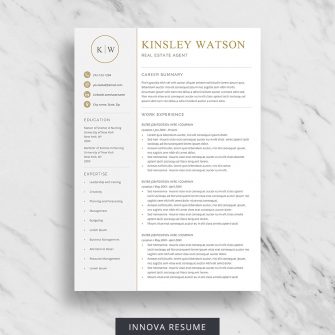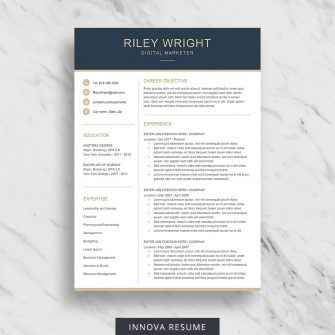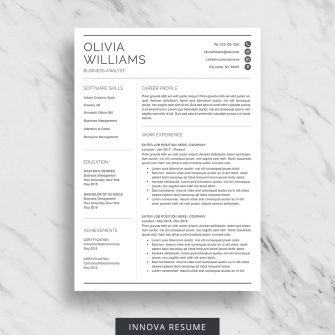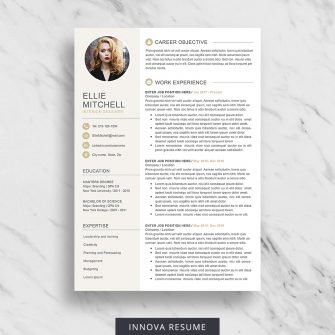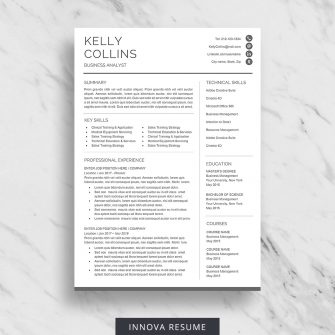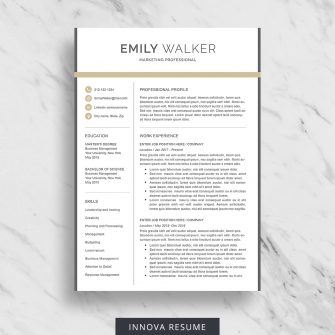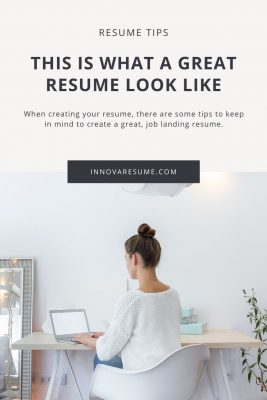Resume Tips
This Is What a Great Resume Looks Like
A resume is an essential document for any job applicant. Your resume is a summary of your qualifications for a hiring managers and recruiters. Still today most organizations prefer a resume to decide whether an applicant is the right fit for their company or not. Understandably, you should work towards developing the best possible resume. What does a great resume look like? Your resume should to be up-to-date, well-structured, and easy to read. When creating your resume, there are some tips to keep in mind to create a great, job landing resume. To learn about the tips, continue to read this article to the end.
1. Use a Simple Yet Modern Design
A simple, neat layout is always a recommendable idea for a resume look – unless you are seeking a design role. A resume should contain clear section headings. You can make the heading stands out by using capital letters, colors, or bolding the letters. Also, some white space should be on the resume – it’s an indication that the piece is not overstuffed. It’s never a good idea to use fancy graphics, illustrations, and pie charts. When placed on resume-scanning software, the graphics don’t usually translate well.
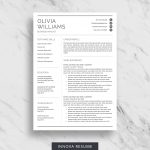
2. Instead of an Objective Use Summary Statement
A statement like “applying for a senior-level product designing position in the industry” is a resume objective. It informs the hiring manager about what you seek. When using a summary statement it describes the value that you can bring to the company that you are seeking the role from.
3. Highlight Vital Skills
It’s crucial to include skills for the job that you are applying for. You can find the skills that they are looking by reading the job description thoroughly. From the job description, you will find the programs, keywords, and expertise that they are looking for. List any responsibility that you have held in your previous role if it’s mentioned in the job description. You can choose to put the skills at the top of your resume, below your work experience or even on the sidebar as you see on the more modern resumes designs.
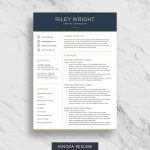
4. List The Most Recent Experience First
The conventional reverse chronological format is still a welcome idea among recruiters. They would like to see your most recent job listed before others.
5. Use Bullet Points
Bullet points come handy for listing responsibilities and accomplishments. Refrain from using paragraphs as they make the content appear denser and challenging to read. It’s vital to begin each bullet with an engaging action verb.
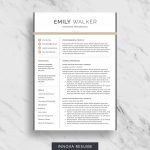
6. Add Volunteer or Other Experience
You can add personality to your resume through a list of volunteer work. Also, adding other interests tells a lot about you. Besides experience, volunteer work can help show a set of transferable skills that you have learned beyond your workplace.
7. Add Results and Numbers to Your Bullets
When you quantify your bullet points, it shows your impact on a previous role. You can use numbers or results to show off your success. For those who are not into number-oriented job or field, you can provide answers to questions such as: How big was the team you managed? How many end-users purchased your products? How often did you execute a task?
Conclusion
Implement these tips while developing your resume. They will go a long way in creating a clean, clear, and concise job-winning resume. Here are some resume templates to improve your resume look in no time. All these templates are well-structured, and easy to read. Pick your favorite and copy paste your information to the new fresh layout.


